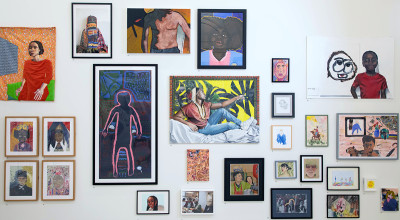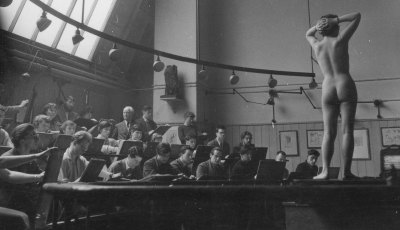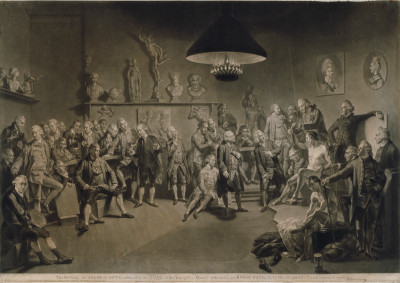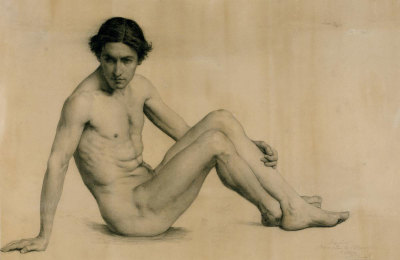Allen Jones’s ‘Chair’: the debate
Allen Jones’s ‘Chair’: the debate
By Stacy Boldrick, Lyndsey Morgan and Grace Woodward
Published 26 November 2014
Ahead of our Provocations in Art Salon, speakers Stacy Boldrick, Lyndsey Morgan and Grace Woodward describe their first reactions to a work that has sparked everything from vandalism to real-life re-creation. What’s your view?
-
Allen Jones’s Chair was first exhibited in 1970 – along with two other furniture sculptures, Table and Hat Stand – to a wave of public outrage. In 1986, when Tate exhibited the work, it was subject to a feminist attack; a letter to the gallery described the sculpture as “deeply offensive”, before two women arrived on International Woman’s Day and poured paint stripper over it. The debate about the status of this controversial work continues today. Here three commentators share their views, ahead of a round-table discussion on 5 December.
Stacy Boldrick, curator of Tate Britain’s exhibition, Art Under Attack: Histories of British Iconoclasm
When I first saw Chair, I felt sorry for the sculpture, and then alienated by it. It looked uncomfortable in its constrained position, which would only be exacerbated by the weight of a sitter. I also felt angry and thought that this was art made for others, and not for me. I think this work is both objectifying and transgressive. The outfit – hot pants, boots and gloves and nothing else – alludes to the subcultures of sadomasochism and fetish culture, while the body of the sculpture is mannequin-like; an idealised woman presented in an impossible position which anticipates the domination of a (male) sitter.
-

Allen Jones RA, Chair, 1969.
Painted fibreglass, resin, Plexiglas, mixed media and tailor made accessories. 78 x 96 x 57 cm. More Gallery. Image courtesy of the artist © Allen Jones.
-
Grace Woodward, fashion commentator and feminist
I think I was a burgeoning feminist the time when I really remember seeing Chair, although this instance was in fact a real woman, the artist Jemima Stehli, re-working the piece as she positioned herself in the pose of the mannequin. Having been to art school I knew Allen Jones’s work, so I understood what Stehli was trying to do. I ended up posing nude for her in a Helmut Newton-esque set up. Is there a difference between being objectified by a man or a woman?After years of being immersed among thousands of images of other women – which is both my job and the side effect of actually being a woman with purchasing power – images made by Jones and Newton don’t offend me the way that normal images do. By “normal” I mean what is often portrayed in the media as the average UK woman: usually blonde, pretty, slim, tall, invariably “happy” and unchallenging; basically someone else’s idea of perfect. In Jones’s work I see power, complications, sex, anger, relationships, money and all the stuff that we deal with daily, rather than the homogenised version of advertising. I feel empowered by his images. I feel like he looks at women who look like that, which I think I do on a very good day, and he glorifies them. In some of them you quite literally see the pedestal. I’d happily be up there.
-
People ask if Jones is objectifying women. He says he’s a feminist – the woman is the subject, the sculpture is the object.
Edith Devaney, curator of 'Allen Jones RA'
-
Lyndsey Morgan, conservator who worked on Chair after it was sabotaged with acid in 1986
I first saw Chair when I was very young, maybe ten years old, and my dad had taken me on one of our regular weekend visits to the Tate. The sculpture stuck in my memory because this woman was very much at my level and she was so perfect and realistic. I had no clue about the sexual politics that would later come to surround it, but to pigeon-hole this sculpture as either transgressive or objectifying would be wrong – it’s a piece of art, so it’s never that simple. Now I see this artwork as having an important place in the history of sculpture. I think it breaks new ground and the fact that the furniture sculptures have become part of our popular culture is testament to that.What do you make of Chair? Share your view below, join the debate on Twitter using #AllenJones or book a place for the Salon, Provocations in Art, on 5 December. Tickets include a place at the round table discussion and a drink.




